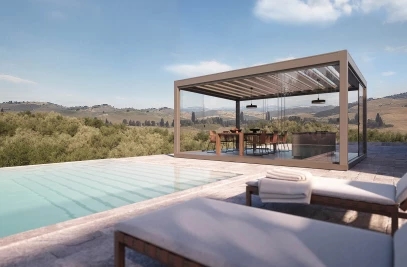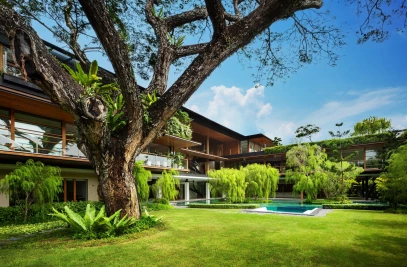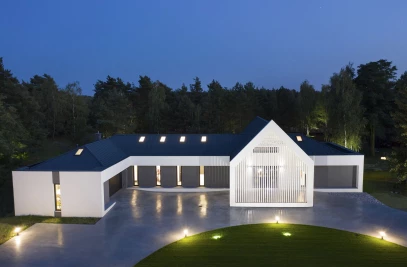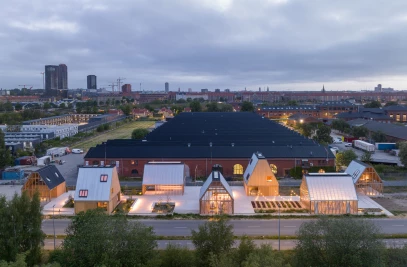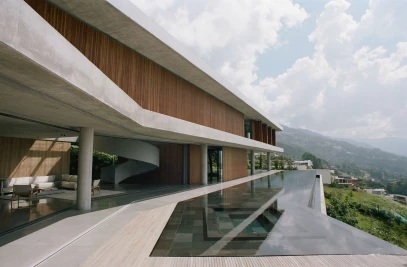LYCS Architecture specialize in urban development and interior design anchored within concerns around urban density and responsiveness to unique user and site needs. When they embarked on the ambitious reconstruction/redevelopment of a 4,000 sq. m site in the ancient town of Linhai in China’s Zhejiang Province into a boutique hotel, they began by addressing the existing site architecture and its associated history(ies).

The site housed a century-old pawnshop and courtyard, two sixty-year old brick and concrete industrial houses, and two thirty-year old warehouse structures. These typologies taken together formed what the designers dubbed a ‘living historical building museum’. The design challenge was conceived fundamentally as a question of how to create a contemporary experience and living space whilst still holding fidelity to the various ages of the assortment of existing buildings of such disparate ages?

To explore this question, the concept of a ‘space corridor’ was used as the core design matrix. The existing buildings were broadly reflective of three different historical eras; the late Qing Dynasty, early Republic of China, and post-liberation reform. The design sought to play on the historical contrast between the buildings through restoring them in a way that retained their core aesthetic and spatial functions through a retrofit design process. The design could therefore explore new residential models which could resonate with visitors and guests across a range of ages and backgrounds.

The core of the hotel is found within the Siheyuan, the oldest typology. Restoring the vitality and centrality of the courtyard was paramount in retaining the integrity of the original function. The courtyard was now reimagined as an ‘urban living room’ open to city residents as well as tourists staying at the hotel, encouraging interaction between the two. Privacy of guests was maintained through innovative partitions. One part of the space was selected for a two-story height area which could function as a bookstore, coffee house or guesthouse. The original industrial buildings were heavily restored and repaired but traces of the originals were retained and a contemporary addition worked in to create dramatic spatial effect. The warehouses were restored with structural frameworks intact, but at the same time the space was updated toward a more modern feel through adding rusty metal plate cladding.

LYCS also designed the interiors of the hotel rooms, and in contrast to the uniform room style typical of hotels, the designers took user behaviour as the design driver to create a more experiential environment across the types of rooms offered across the three spaces. Here, the space itself seeks to transport the visitor through the various periods of history. The design influences behaviour and generates a different kind of dialogue between guest and space, and the interweaving between the ‘space corridors’ at once unifies and differentiates the various histories of the site.

For the courtyard guestrooms, an ‘under the sky’ theme was applied. The purity of the original wooden beam and column structure was retained and served as a divider between exterior and interior. Furniture was locally made and matched to the wood tones. Roof panes introduced natural light to the interiors which created a sense of timelessness.

Guestrooms within the industrial complex were conceived as straddling tradition and modernity, with the historical texture of the brick and concrete structure again retained, but with the core living function placed in the centre of the guest room to invoke a spacious, airy feel.

For the warehouse spaces, the fifty-fifty traditional to modern balance of the industrial rooms was tweaked to a twenty percent traditional to eight percent modern design concept focusing on more stylish rooms to appeal to a different subset of guests. Original architectural elements were distilled into a few potent details brought forward into the new rooms, which then added wood-coloured tones to induced warmth and a more comfortable, lived-in feel.

























